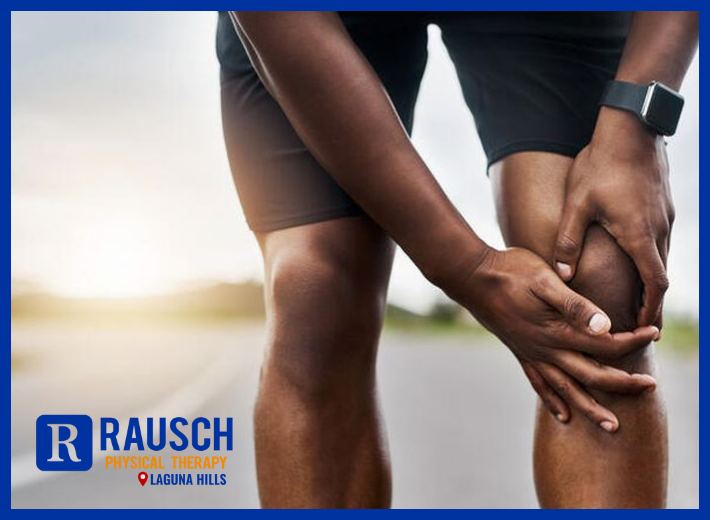Balancing a healthy diet and a consistent exercise routine can often feel like a complicated equation, but successful healthy living is truly about synergy, not sacrifice. The key to long-term,
How To Avoid Exercise Injuries
January 2, 2022 2:02 pm / Category: Laguna Niguel

If you’re one of the many who have made a goal to live life with less pain (aka — all of us!), we’re here to encourage you to choose physical therapy! PT can get you on the path to functioning better and to a higher quality of life while helping you reach some important goals. Here, we bring you some tips on how to avoid exercise injuries. With a little planning, you can stay safe during your activities and start the new year pain-free. Come and see us to learn first-hand how to avoid repetition injuries and maintain excellent form. No prescription is needed — AND we are a super fun group to get healthy with!
Regular exercise is good for your body and safe for most everyone. However, with any type of activity, there is a chance you can get hurt. Exercise injuries can range from strains and sprains to back pain.
With a little planning, you can prevent injury and stay safe during exercise.
What Causes Exercise Injuries?
Some of the most common causes of exercise injuries include:
- Exercising before your body has warmed up
- Repeating the same motion over and over again
- Not having proper form for your exercise
- Not resting in between workouts
- Pushing your body too hard or too quickly
- Doing an exercise that is too strenuous for your level of fitness
- Not using proper equipment
Warm up and Cool Down
Warming up before exercise gets your blood flowing, warms up your muscles, and helps you avoid injury. The easiest way to warm up is to exercise slowly for the first few minutes, then pick up the pace. For example, before running, walk briskly for 5 to 10 minutes.
You should also cool down after exercise to bring your heart rate and body temperature back to normal. Cool down by ending your routine at a slower pace for the last 5 to 10 minutes.
To Stretch or not to Stretch
To stay flexible, you should stretch at least 2 times a week. But it is unclear whether stretching really helps reduce injury.
You can stretch either after you have warmed up or after you exercise.
- Do not stretch cold muscles.
- Hold stretches for no longer than 15 to 30 seconds.
- Do not bounce.
Choose Your Exercise Wisely
If you have not been active, or have a health condition, talk with your health care provider to make sure you are healthy enough for exercise. Ask what types of exercise might be best for you.
If you are new to exercise, you may want to start with low-intensity options such as:
- Walking
- Swimming
- Riding a stationary bike
- Golf
These types of exercise are less likely to cause injury than higher-impact activities like running or aerobics. Contact sports like soccer or basketball are also more likely to cause injury.
Use the Right Equipment
Using safety equipment can greatly reduce your risk of injury.
Safety equipment for your sport may include:
- Footwear
- Helmets
- Mouth guards
- Goggles
- Shin guards or other protective guards
- Kneepads
Be sure you use the right type of equipment for your sport. For example, do not play tennis in running shoes. Wear a ski helmet, not a bike helmet, when downhill skiing.
Make sure your exercise equipment:
- Fits you properly
- Is the right design for your sport or activity
- Is in good working condition
- Is used correctly and consistently
Learn Good Form
If you are new to an exercise or sport, consider taking lessons to learn the basics. Learning the right way to do an exercise or sport can help prevent injury. Look for lessons in your community or through sports or outdoors organizations. You can also consider hiring a personal trainer.
Cross Train
To help prevent overuse injuries, vary your workouts. For example, instead of running 3 days a week, cycle 1 day and run 2. You will use a different set of muscles, and still get a good workout.
Listen to Your Body
Forget the old saying “no pain, no gain.” Of course, to build strength and stamina, you will need to push your body. The key is to push slowly and gradually. You can expect sore muscles after your workout. But you should never feel pain when exercising. If you feel pain, stop right away.
Being tired all the time can also be a sign that you may be overdoing it. In general, avoid increasing these 3 things all at the same time:
- Number of days you exercise
- Length of time you exercise
- How hard you work out
If you do have an injury, you can try to treat strains and sprains at home.
When to Call the Doctor
Call your provider for any muscle or joint pain that does not go away after self-care.
Go to the hospital right away or call 911 or the local emergency number if:
- You have chest pain during or after exercise.
- You think you have a broken bone.
- The joint appears out of position.
- You have a serious injury or severe pain or bleeding.
- You hear a popping sound and have immediate problems using the joint.
2022 is the year to push your limits and elevate your performance with a customized physical therapy program. Let us help you perfect your form and increase performance. Contact our experts today at (949) 597-0007 and join our Facebook community here.
Reference:[https://medlineplus.gov/ency/patientinstructions/000859.htm]






